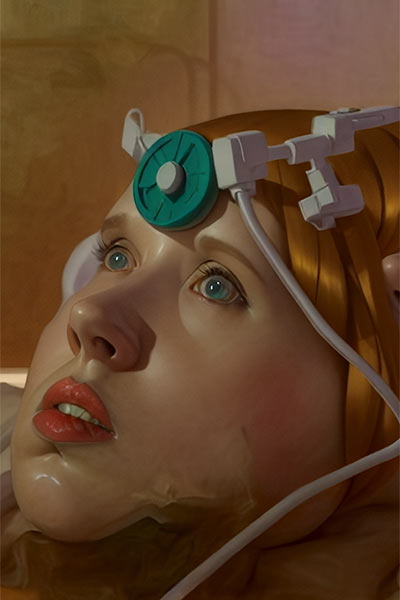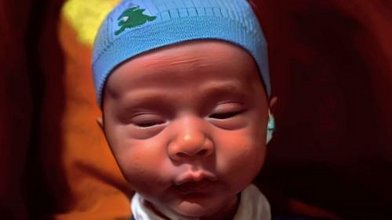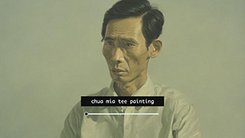Museum
Apophénies, interruptions. Artistes et intelligences artificielles au travail
Apophenia, Interruptions: Artists and Artificial Intelligence at Work
25 Sep 2024 - �6 Jan 2025

The event is over

Holly Herndon & Mat Dryhurst, « I’m Here, 17.12.2022, 5:44 », 2023 - © D.R.
New commissions, recent works… six installations (Éric Baudelaire, Mat Dryhurst and Holly Herndon, Auriea Harvey, Ho Rui An, Interspecifics, Agnieszka Kurant) to explore the fertile connections between artistic creation and artificial intelligence.

Holly Herndon & Mat Dryhurst, « I’m Here, 17.12.2022, 5:44 », 2023 - © D.R.
The exhibition explores some of the implications of artificial intelligence, with a focus on the role of human intelligence and intervention in creative processes, to the point of modifying AI production systems themselves. Reflections on collective memory as catalogued in national archives, an experimental investigation into the end of great narratives, a forecast of future, yet-to-be-made works of art, intimate experiences and the backwash of colonial history… such are the themes that emerge in the works presented, all characterised by a lucid curiosity and all testers of this new technology that is transforming our world.
While generative AI opens avenues to transform artistic research and offer new creative tools, it also has a profound impact on the way we are now led to look at works of art. The term “apophenia”, coined in 1958 to diagnose schizophrenia, refers to a cognitive disorder that involves perceiving meaningful connections between disparate and seemingly unrelated things. Such phenomena may be compared to the erroneous connections in the object detection processes at the heart of generative artificial intelligences. Such processes, which hang between algorithmic efficiency and errors that hinder coherence, are considered here as the fertile starting point for artistic research.
With generative AI, neural networks transcend information analysis and become creators themselves, in that they generate new images and new texts synthetised from vast sets of data collected from the internet. However, as with apophenia, distortion and biases appear frequently, producing incorrect content called “hallucinations”.
Even if they are attenuated by human intervention in the training, filtering and labelling processes, these inaccuracies are worrying. And yet, these models are already used daily by millions of people. It is the very characteristic of mass access to AI that makes this such a revolutionary moment and, consequently, summons artistic critical explorations. It is not merely a question of considering the potential consequences of this new technology, but also of understanding how they are starting to modify and shape our social world.
The second phase of a collaboration with KADIST, a non-profit contemporary art organisation that advocates art as a driving force for social change, this exhibition invites us to comprehend how new technology is starting to change our world, its images and its stories.
When
11am - 9pm, every days except tuesdays
Booking strongly recommended
Where
Partners
![]()

